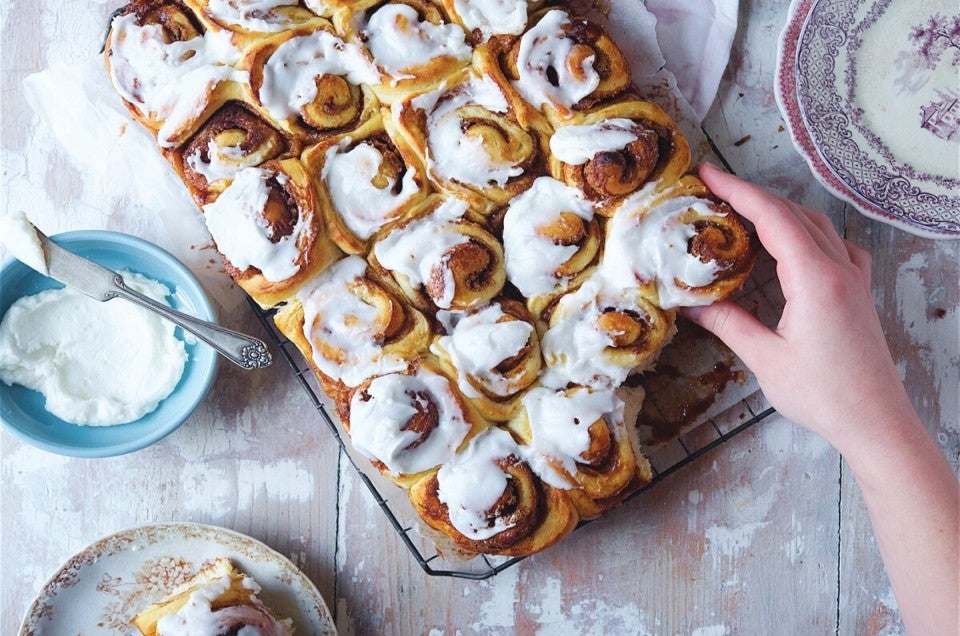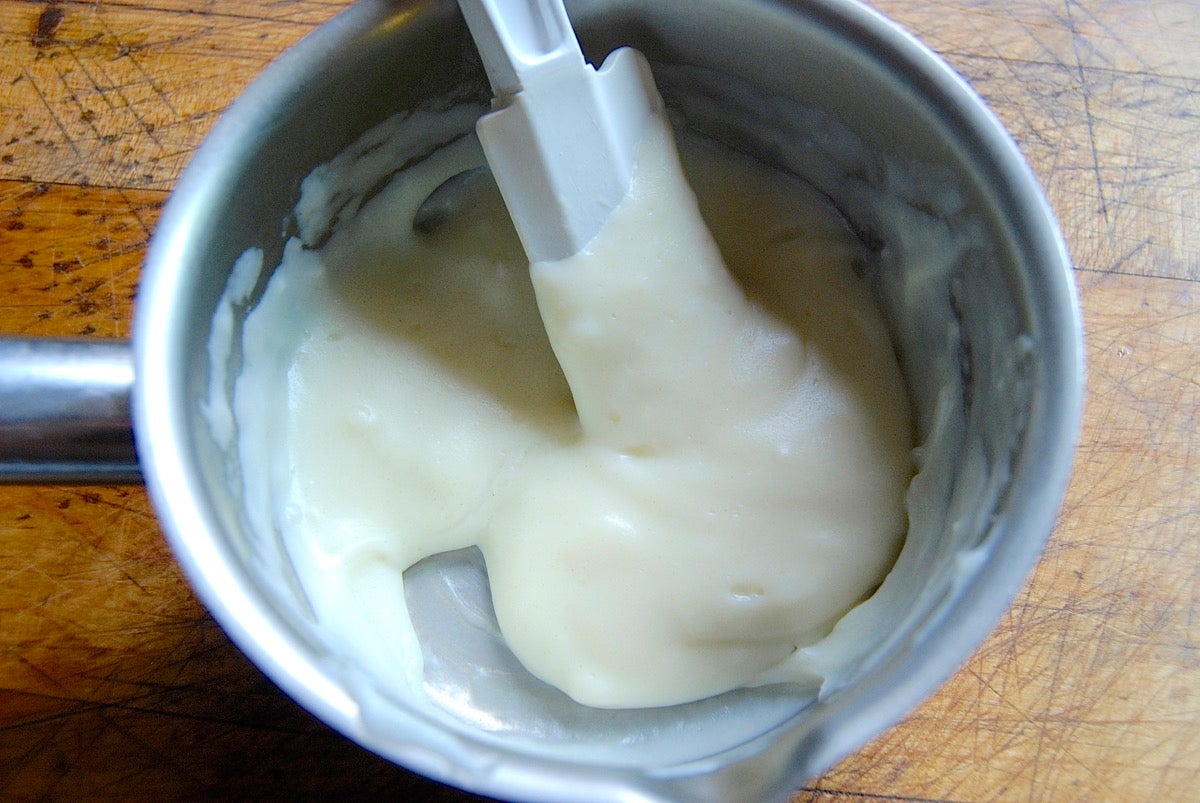


Cinnamon rolls are a source of endless experimentation for me.
I don't mean just consuming them: slice vs. pull apart, bite vs. unravel, etc. I'm actually talking about how cinnamon rolls are made.
A fresh-baked cinnamon roll is delicious – but oh, how fleeting its taste and texture! Like the ingénue who wins the leading role at age 16 and is washed up by age 20, most cinnamon rolls hit their peak of perfection 5 minutes out of the oven. Once cooled, they become plebeian – just a semi-tough white roll covered in too much bland white icing.
My goal: make a cinnamon roll that's soft, moist, and delicious not only hot from the oven, but for several days thereafter.
I've been thinking a lot about cinnamon rolls over the past few weeks – what traits the perfect roll possesses, which need to be avoided.
I've even dreamed about cinnamon rolls – including a nightmarish scenario where the rolled-up dough kept unrolling itself faster than I could re-roll it. Totally Sisyphean, if you're into Greek mythology.
And after thinking, reading, and consulting with my fellow EAT members (that would be King Arthur's Education Advisory Team), I've come up with a recipe that fills the bill: Soft Cinnamon Rolls.
These high-rising rolls are soft as a baby's smile. One taste-tester described their interior as "pillowy." Two others simply rolled their eyes and gave me the thumbs-up.
Let me show you how to make cinnamon rolls that are wonderful right out of the oven, and only slightly less good later in the day – or even a couple of days afterwards. Try our Soft Cinnamon Rolls recipe, which incorporates all of these strategies. Or use these tips to tweak your own favorite recipe, giving your rolls added softness and shelf life.
 Pre-cook flour for moister buns.
Pre-cook flour for moister buns.Tangzhong is an Asian method for producing soft, light-textured white bread and rolls. It involves taking between 5% and 10% of the flour in your recipe, combining it with some of the recipe's liquid, and cooking it into a thick, pudding-like substance—think thick roux.
What's the deal? Cooking flour with liquid gelatinizes the flour's starch. That starch is then able to hold onto water better, both during baking (less evaporation) and afterwards (longer shelf life). Use it in your yeast dough, and bread and rolls will stay soft and fresh longer. See the recipe for complete tangzhong instructions.
Bread flour can absorb more liquid than all-purpose flour—i.e., it has a higher hydration capacity. More liquid in the dough = added moistness/softness in the finished roll.
The tangzhong method uses bread flour—probably because most typical Asian flour is fairly low in protein, and bread flour provides the necessary higher protein for a good rise. So if you're using a traditional tangzhong process, make sure you have bread flour on hand.
Cinnamon rolls including eggs, whole milk, and butter will be softer and stay fresher longer than those made from a "lean" dough: one made with just flour, water, salt, and yeast.
Fat provides a rich mouth-feel that we perceive as moistness; it also creates a barrier that helps prevent moisture from escaping. In addition, fat coats gluten and keeps it from bonding too strongly, producing a delicate crumb.
Adding more liquid to your dough right up front means there's more remaining in the finished roll—which translates to moist texture.
Dough kneaded in a mixer bowl should stick to the bottom and sides of the bowl slightly, as well as to the dough hook.
And here's a handy tip: For easiest kneading of wet, sticky dough, mix it up, then let it rest for 20 minutes before kneading. This gives the flour a chance to absorb the liquid, making it less sticky and easier to work with.
Cinnamon rolls from the center of the pan are always softer than those around the edge, right? So choose a pan that can hold a higher percentage of interior rolls. Rather than two 9" round pans, use a 9" x 13" pan.
How about a 12" round pan – wouldn't that offer the same capacity with even more interior?
Well, if you do the math (circumference vs. volume), yes. But practically speaking, it's difficult to get the rolls in the very center fully baked before those at the edge become over-baked. A 9" x 13" pan is a good compromise.
Cut your log of cinnamon-filled dough into 1 1/2" rather than 1" slices. This will create cinnamon rolls with more interior/less surface area.
And place them close together in the pan so that they're really crowding one another once they're fully risen. Again, this will create more soft sides, fewer browned edges.
Don't worry if they're not golden brown across the entire surface. So long as they're fully set, they can be pretty darned pale.
I like to bake my rolls to just under the 190°F mark that's typical of fully baked soft yeast bread. Didn't know about that 190°F thing? Hello, digital thermometer!
Confectioners' sugar, whole milk or cream, and butter make a rich icing that will contribute to cinnamon rolls' interior texture.
How?
The thick icing will partially melt, seeping down into the crevices between the rolls, as well as into the cinnamon swirl.
This "icing bath" will help keep cinnamon rolls moist as they age.
Though really, how long are these going to "age?"
And if there are any left after the initial onslaught, re-create the ultimate FRESH-baked experience by reheating briefly in a microwave (and consuming quickly); or tenting with foil and reheating in a 350°F oven until toasty warm.
Do you have your own personal tip for bringing cinnamon rolls to the next level? Please share in comments, below.
And if you like the tangzhong method, try it in our wonderfully light, moist Japanese Milk Bread Rolls.













